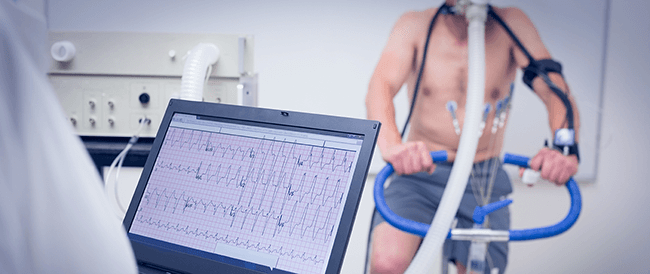In order to determine the effects of NH upon the respiratory muscles in COPD patients, it’s important to take a look at some of the research that has been conducted. In the study we’re exploring today, NH was tested to determine its ability to improve thoracoabdominal coordination, SpO2, ventilatory pattern, exercise capacity, and quality of life (QoL) in COPD patients.
Key Findings
- Normocapnic hyperpnea (NH) strengthens the respiratory musculature by accelerated deep breathing with controlled oxygen saturation of the blood.
- The effect of NH on respiratory muscle disorders such as COPD is unclear.
- 4 weeks of NH improved respiratory muscle strength, exercise capacity and endurance, dyspnea, muscular fatigue, and thoracoabdominal musculature.
- Inspiratory muscle strength directly correlates with improved exercise capacity and quality of life.
Patient Impact
NH RMT effectively improves symptoms of COPD, exercise capacity and quality of life.
Study Methods
Patients underwent four weeks of NH training at 50% to 60% voluntary ventilation. Outcome measurements were taken at the beginning and the end of the study period.
Study Results
RMT using NH resulted in improved:
- Inspiratory muscle strength (MIP)
- Exercise capacity and endurance
- Oxygen saturation
- Phase angle of the thoracoabdominal muscles
- Dyspnea and muscular fatigue
NH poses a valid RMT method that is beneficial for COPD patients as it improves respiratory muscle strength, exercise capacity, dyspnea and muscular fatigue. The study also clearly shows that increased inspiratory muscle strength is the reason for improved exercise capacity and improved quality of life.

0 Comments